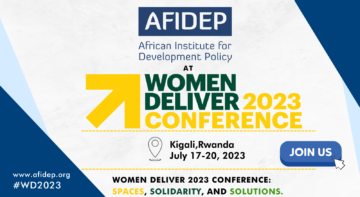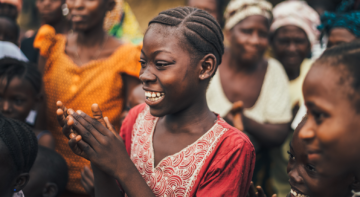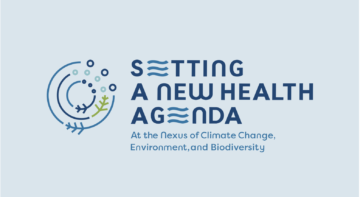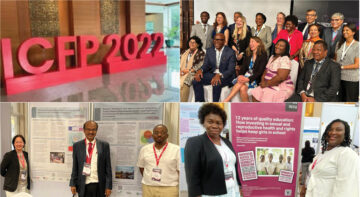Blogs

As part of a series marking International Women’s Day, the Exemplars in Global Health (EGH) platform spoke with Dr. Nyovani Madise of the African Institute for Development Policy (AFIDEP) about accelerating the achievement of the sustainable development goals in Africa.
Dr Nyovani Madise estimates we’re about 50 years behind schedule in terms of equality and believes that accelerating women’s health is critical to catching up.
As part of our series marking International Women’s Day, we spoke with Dr Madise, the Director of Development Policy and Head of the Malawi office of the African Institute for Development Policy, about how things like maternal and child health and sexual and reproductive health are drivers of equality.
We also spoke with Dr Madise, who has written more than 100 publications on the complex relationship between poverty and health in maternal and child health, adolescent sexual and reproductive health, and food and nutritional security, about accelerating the achievement of the sustainable development goals (SDGs) in Africa.
This year’s theme for International Women’s Day is ‘gender equality today for a sustainable tomorrow.’ What does that mean to you?
Dr Madise: I think it speaks about the progress we’ve made – and the lack of progress, too, because we haven’t really made that much progress. We’re still talking about women being abused, and punishments that don’t make sense, or disparities in pay, or people saying things like, “oh, but she’s a woman.” So, to me, what gender equality now for sustainability in the future really says is that we should have been where we need to be maybe 50 years ago. And now we really need to accelerate it because the consequences of not achieving gender equality are quite severe, not just for the well-being of men and women, but also economically, health-wise and indeed in all manner of things. Back in 2015, a McKinsey report was published stating that achieving gender equality by 2025 could add US$12 trillion to the global economy. To me, those are staggering numbers.
Women’s health covers many health areas. Why should women’s health be treated as its own area of study?
Dr Madise: Why single out women if health happens to men and women? The answer is in part related to what the data shows, and how women bear a significant burden, whether in pregnancy leading to death or having babies and ending up mostly looking after the babies. Women are the ones who continue to work, even after coming home from work, to make sure everybody is fed and cared for. And that has an impact on their physical health, as well as their mental health. Women can be the linchpin of the world and we need to pay attention to that. The other angle is that there is a bit of lip service paid to put money into women’s issues. I wonder if it’s because most of the decision-makers are men, or if it’s because they’re seeing women as less powerful.
Contraception has been a core pillar of women’s health. Why is the use of the voluntary use of modern contraception, and satisfying the demand for it, such an important component of women’s health?
Dr Madise: Firstly, it makes sense to ensure that women who are sexually active and do not want to have a pregnancy have contraception to enable them to make that choice. We must meet that demand. Secondly, we must see this from a human rights perspective. Women have a right to good health, and if they end up with an unplanned pregnancy – maybe it’s too early, maybe it’s too many and they don’t want another one, or it’s too late and that has an impact on their health – it can negatively impact their lives. We need to provide women with services that enable them and their spouses or partners to actually plan and decide when to have children, how many to have, etc. Not providing this impacts not just women’s health, but it impacts their human rights. Their reproductive health rights.
Many women around the world use so-called ‘traditional’ contraception or no contraception, instead of modern contraception. Traditional methods can include options like the withdrawal method, the rhythm or calendar method, or lactational amenorrhea (when women do not have their periods after birth due to breastfeeding), but can also include rituals or traditional medicines that don’t work and can even be harmful. How should this gap between tradition and modernity be addressed?
Dr Madise: Traditional methods that are folkloric need our attention. Not because we think they prevent pregnancies, but because we need to understand why a woman or a couple chooses them.
They want something – contraception – but we are not fulfilling that demand, so that gives us information. It’s important to note that there are places in the world where we’re seeing a rise in traditional methods, especially in urban areas. In cities in India or Nigeria, we’re seeing quite a high percentage of women using traditional methods. In the DRC as well. Even among women who are educated, we’re seeing a high percentage, so something is happening there. Other methods such as lactational amenorrhea (LAM), calendar method or withdrawal have some efficacy and can be considered as options for use at certain points as long as couples understand how these methods work and the tradeoffs. For example, postpartum women may use LAM before their menses return, but sometimes women can fall pregnant before menses return, so a backup method is always a good idea. Our research on how we measure traditional methods use is in progress, and we hope to understand the motivations so we can address those gaps.
Why is it so important to support adolescents in preventing and managing pregnancies, specifically unintended pregnancies?
Dr Madise: We’ve all been young girls. I often think about my life as a young girl, and I think about what could have happened to me had I gotten pregnant at an early age. Because it’s very easy to end up in a situation where you have an unplanned sexual encounter that is unprotected, and then you end up with a pregnancy. I think about friends who ended up with an unintended pregnancy and what their lives are like now and then I think, “OK, but for the grace of God, I am where I am.” Adolescents need to be given an enabling, supportive space so they can achieve their full potential. And if that means we need to make sure they don’t become pregnant when they do not want to be, we need to make sure that happens. I feel very strongly about that because, as I said, we’ve all been there.
In Malawi, you’re looking at something like 46 per cent or thereabouts of women who were child brides and got married before they were 18. Once they’re married, it’s usually about nine months and then they become pregnant. So, the lack of contraception and the disempowerment of girls is in a context of 46 per cent of more than 2.3 million adolescent girls at risk of early marriage. And that percentage is repeated across the majority of Africa, especially in high-fertility countries.
How does working towards the SDGs benefit women’s health and vice versa?
Dr Madise: The SDGs compel countries to make sure there is universal access to sexual and reproductive health and rights for women. And that includes family planning. SDG 5 on gender equality addresses the same thing and, in addition, it compels countries to prevent harmful practices such as child marriage, genital mutilation, and other forms of gender discrimination. But I would say that women’s issues affect all the SDGs. To address poverty, for example, we must understand that women who are unhealthy can’t really contribute economically. We need to highlight the importance of women and girls, particularly in terms of education, of being healthy, so they can be empowered to contribute to our continent’s achievement of the SDGs.
This article first appeared on the Exemplars in Global Health (EGH) platform. EGH a coalition of experts, funders, and collaborators around the globe who share the belief that rigorously understanding global health successes can help drive better resource allocation, policy, and implementation decisions.
Related Posts





